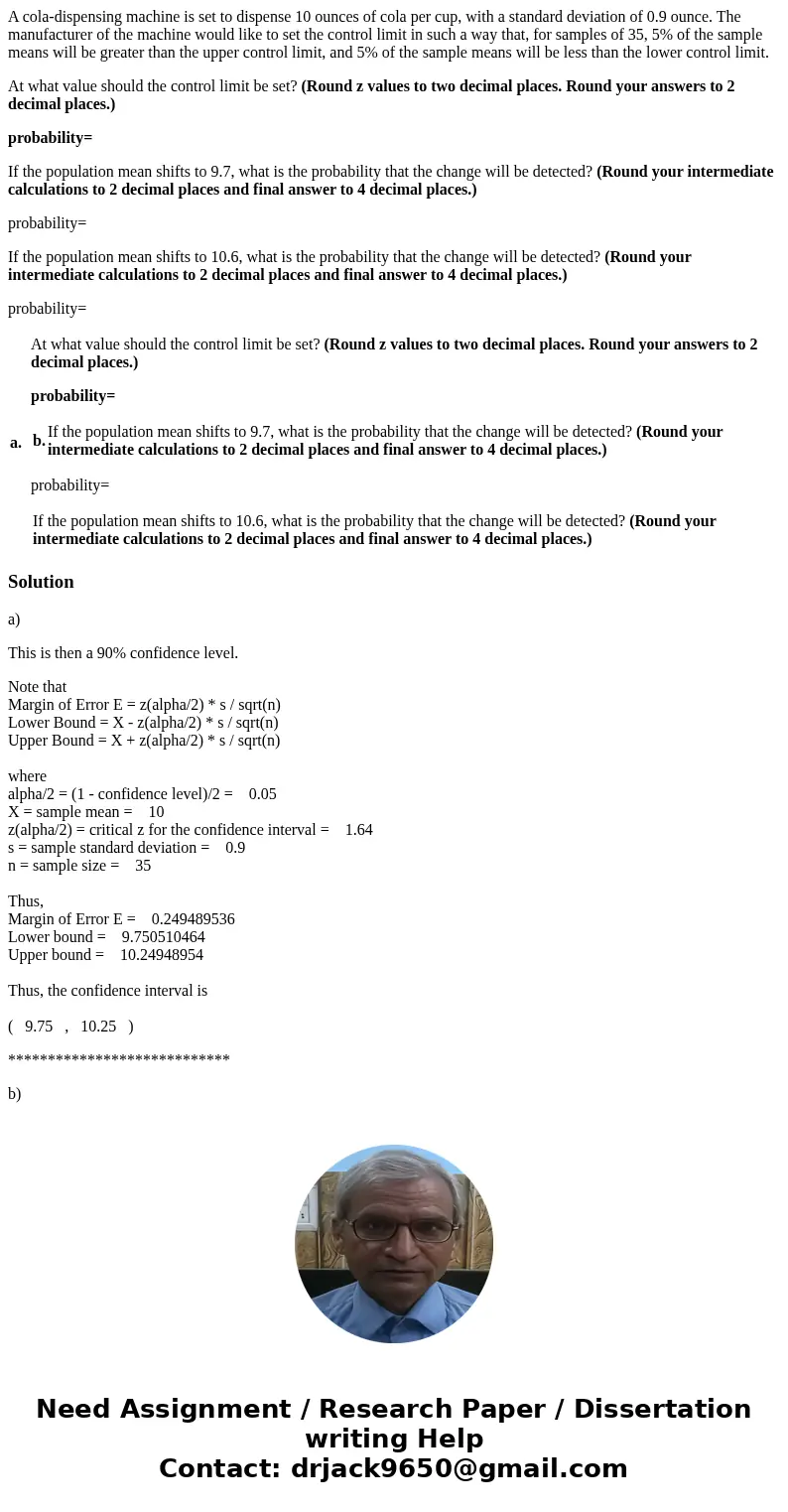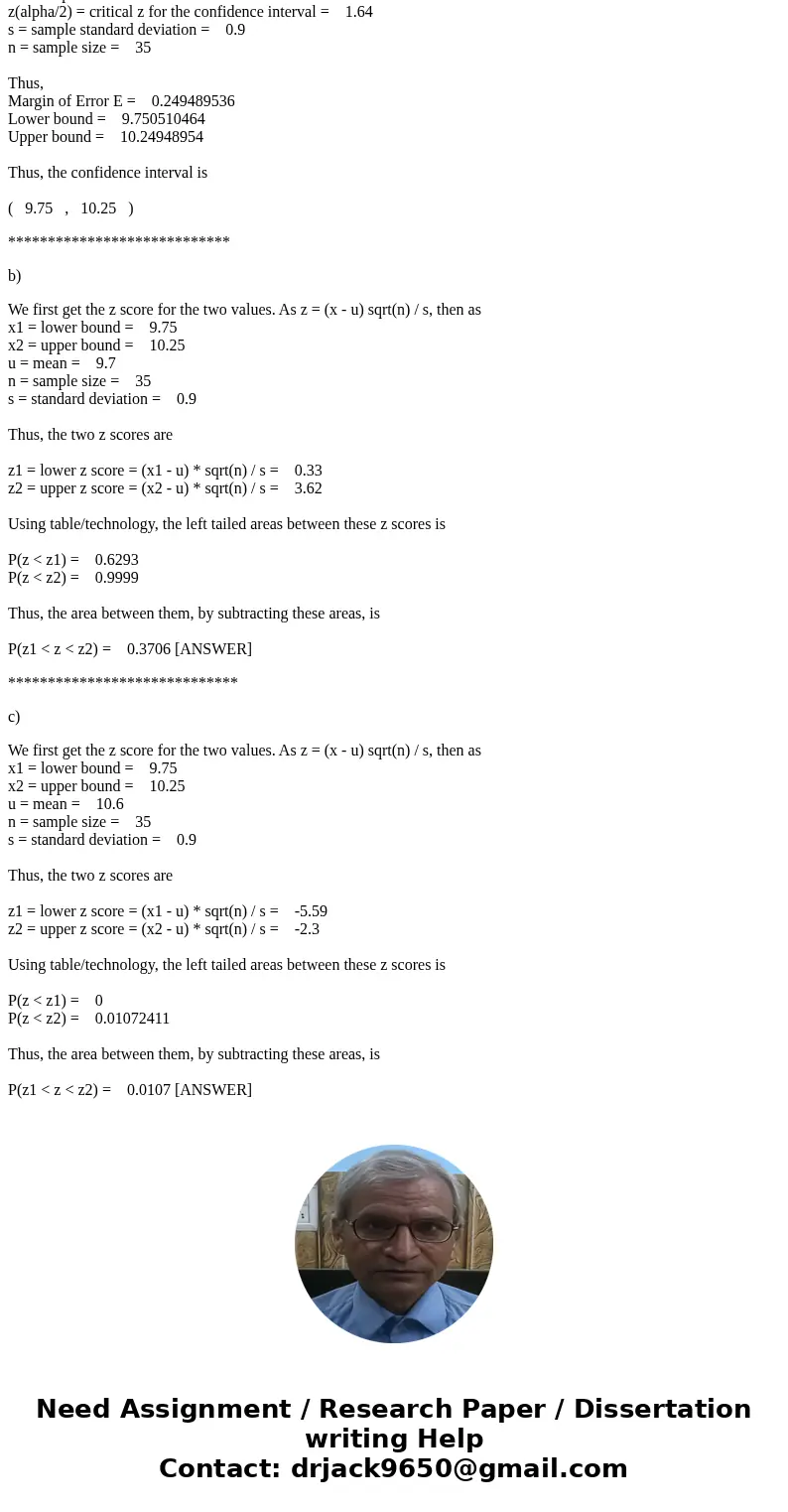A coladispensing machine is set to dispense 10 ounces of col
A cola-dispensing machine is set to dispense 10 ounces of cola per cup, with a standard deviation of 0.9 ounce. The manufacturer of the machine would like to set the control limit in such a way that, for samples of 35, 5% of the sample means will be greater than the upper control limit, and 5% of the sample means will be less than the lower control limit.
At what value should the control limit be set? (Round z values to two decimal places. Round your answers to 2 decimal places.)
probability=
If the population mean shifts to 9.7, what is the probability that the change will be detected? (Round your intermediate calculations to 2 decimal places and final answer to 4 decimal places.)
probability=
If the population mean shifts to 10.6, what is the probability that the change will be detected? (Round your intermediate calculations to 2 decimal places and final answer to 4 decimal places.)
probability=
| a. | At what value should the control limit be set? (Round z values to two decimal places. Round your answers to 2 decimal places.) probability=
probability=
|
Solution
a)
This is then a 90% confidence level.
Note that
Margin of Error E = z(alpha/2) * s / sqrt(n)
Lower Bound = X - z(alpha/2) * s / sqrt(n)
Upper Bound = X + z(alpha/2) * s / sqrt(n)
where
alpha/2 = (1 - confidence level)/2 = 0.05
X = sample mean = 10
z(alpha/2) = critical z for the confidence interval = 1.64
s = sample standard deviation = 0.9
n = sample size = 35
Thus,
Margin of Error E = 0.249489536
Lower bound = 9.750510464
Upper bound = 10.24948954
Thus, the confidence interval is
( 9.75 , 10.25 )
****************************
b)
We first get the z score for the two values. As z = (x - u) sqrt(n) / s, then as
x1 = lower bound = 9.75
x2 = upper bound = 10.25
u = mean = 9.7
n = sample size = 35
s = standard deviation = 0.9
Thus, the two z scores are
z1 = lower z score = (x1 - u) * sqrt(n) / s = 0.33
z2 = upper z score = (x2 - u) * sqrt(n) / s = 3.62
Using table/technology, the left tailed areas between these z scores is
P(z < z1) = 0.6293
P(z < z2) = 0.9999
Thus, the area between them, by subtracting these areas, is
P(z1 < z < z2) = 0.3706 [ANSWER]
*****************************
c)
We first get the z score for the two values. As z = (x - u) sqrt(n) / s, then as
x1 = lower bound = 9.75
x2 = upper bound = 10.25
u = mean = 10.6
n = sample size = 35
s = standard deviation = 0.9
Thus, the two z scores are
z1 = lower z score = (x1 - u) * sqrt(n) / s = -5.59
z2 = upper z score = (x2 - u) * sqrt(n) / s = -2.3
Using table/technology, the left tailed areas between these z scores is
P(z < z1) = 0
P(z < z2) = 0.01072411
Thus, the area between them, by subtracting these areas, is
P(z1 < z < z2) = 0.0107 [ANSWER]


 Homework Sourse
Homework Sourse